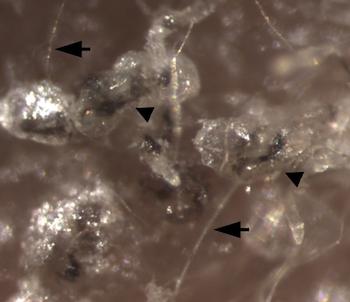 A new controlled diet study has found that increasing the levels of saturated fat in the diet does not lead to increased levels of saturated fat in the blood. However, increasing the amount of carbohydrates in the diet was found to raise the levels of a fatty acid associated with diabetes and heart disease.
A new controlled diet study has found that increasing the levels of saturated fat in the diet does not lead to increased levels of saturated fat in the blood. However, increasing the amount of carbohydrates in the diet was found to raise the levels of a fatty acid associated with diabetes and heart disease. Diets full of high carbohydrate foods such as cookies could increase the risk of heart disease, according to research. Levels of palmitoleic acid were reduced with low carbohydrate intake and increased as the participants consumed progressively larger amounts of carbohydrates over the course of the study.
According to senior author Prof. Jeff Volek, the study, "challenges the conventional wisdom that has demonized saturated fat and extends our knowledge of why dietary saturated fat doesn't correlate with disease."
In the study, published in PLOS ONE, the authors state that current dietary guidelines in the US recommend the majority of calories should be acquired from carbohydrates, with only 7-10% of total energy coming from saturated fats.
To achieve this, foods containing saturated fat - beef, eggs, high-fat dairy products - should be limited. Typically, a reduction in these foods results in an increased consumption of carbohydrates.
"People believe 'you are what you eat,'" says Prof. Volek, "but in reality, you are what you save from what you eat. The point is you don't necessarily save the saturated fat you eat. And the primary regulator of what you save in terms of fat is the carbohydrate in your diet."
Dietary saturated fat not linked to palmitoleic acid
The study involved 16 adults being given six 3-week diets - each containing 2,500 calories and around 130 grams of protein - that progressively increased the participants' levels of carbohydrates while reducing their consumption of total fat and saturated fat.Each of the participants had metabolic syndrome - a number of simultaneously occurring conditions that increase the risk of diabetes, stroke and heart disease. People with metabolic syndrome have at least three of the following conditions: abnormal blood cholesterol, high blood sugar, high blood triglycerides, hypertension and obesity.
The researchers spent 3 weeks to get the participants to a baseline reduced carb diet before beginning the 18-week study. The first diet of the study consisted of 47 g of carbohydrates and 84 g of saturated fat daily, with the carb-saturated fat ratio progressively increasing until the final diet, consisting of 346 g of carbs and 32 g of saturated fat daily.
In this final diet, the carb level represented 55% of the participants' daily calories, a figure that is approximately the same as the estimated daily percentage of energy provided by carbohydrates in the American diet.
Across the study, levels of saturated fat in the blood of the participants decreased. Blood glucose, insulin levels and blood pressure also improved and, on average, the participants lost nearly 22 lb by the end of the 18 weeks.
Levels of palmitoleic acid - a fatty acid associated with obesity, insulin resistance, and heart disease - decreased in all of the participants during the high-fat/low-carb diets. In contrast, the acid was found to increase as the levels of carbohydrates progressively rose across the duration of the study.
Increases in palmitoleic acid indicate that more carbs are being converted to fat instead of being burned as fuel, states Prof. Volek. In contrast, reducing carbs and increasing dietary fat in a well-controlled way ensures that the body will burn the saturated fat as fuel, rather than storing it in the body.
Misunderstanding about dietary saturated fat is 'not smart'
The study authors hoped to discover at which point in the increased intake of carbs that the participants began to store fat in their bodies rather than burning it off. Although palmitoleic acid levels increased in all participants, the moment when fat began to be stored varied widely. This finding supports the idea that individual tolerances to carbs can be dramatically different.Prof. Volek says that there is widespread misunderstanding about saturated fat, stating that despite population studies failing to find a link between dietary saturated fat and heart disease, dietary guidelines continue to advocate restriction of saturated fat:
"That's not scientific and not smart. But studies measuring saturated fat in the blood and risk for heart disease show there is an association. Having a lot of saturated fat in your body is not a good thing. The question is, what causes people to store more saturated fat in their blood, or membranes or tissues?"The authors acknowledge that the study is limited by the relatively short timeframe that the diets were followed for. However, a small number of the participants were given the diets in reverse order, starting with the highest carb diet, and the same observations regarding palmitoleic acid were made.
"A higher proportion of plasma saturated fat is related to increased risk of diabetes and heart disease," conclude the authors. "Thus, there is a need to better understand the relationship between dietary and plasma saturated fat."
Recently, Medical News Today reported on an analysis of clinical trials for four popular diets, questioning the long-term benefits of the Atkins, South Beach, Weight Watchers and Zone diets.
Written by James McIntosh











